Abstract
1. The vascularly perfused intestine of the frogs, Rana ridibunda and R. pipiens, was used to investigate the transfer of the non-metabolized amono acids alpha-amino isobutyric acid (AIB) and 1-amino-cyclopentane-1-carboxylic acid (cycloleucine) across the intestinal epithelium from the lumen into the portal vein. 2. The steady-state rate of transfer of cycloleucine was significantly increased with increasing vascular flow rate, both in the presence and absence of Na in the fluid in the intestinal lumen, although at all flow rates the transfer was lower when the Na was replaced by K. The relatively high rate of transfer of cycloleucine seen at high rates of vascular flow when the luminal perfusate was free of Na was almost abolished when leucine was added to the lumen. 3. When the vascular flow is interrupted cycloleucine is taken up from the lumen and accumulates in the tissue. The accumulated amino acid can be measured during the subsequent wash-out when the vascular flow is resumed. The rates of transfer of accumulated cycloleucine as measured during subsequent wash-out were lower than those found at continuous flow; it is suggested that there is a limit to the amount of amino acid that the epithelial tissue can retain when the vascular flow is interrupted. A significant accumulation of cycloleucine occurs when Na is present in the lumen, but the accumulation is negligible when Na is replaced by K. 4. The unloading of the amino acids AIB and cycloleucine from the epithelium into the vasculature was investigated. The two amino acids showed markedly different kinetics of exit, that of AIB being monoexponential while that of cycloleucine was biexponential. Moreover, the rate of exit of cycloleucine was influenced by the presence of Na in the intestinal lumen, and by the rate of vascular perfusion. The apparent diffusion coefficients for the exit were smaller than those expected had unloading taken place by unobstructed free diffusion. 5. It is concluded that specific processes for exit from the epithelium play a significant role in amino acid transfer across the small intestine, and that the exit of AIB is more restricted than that of cycloleucine.
Full text
PDF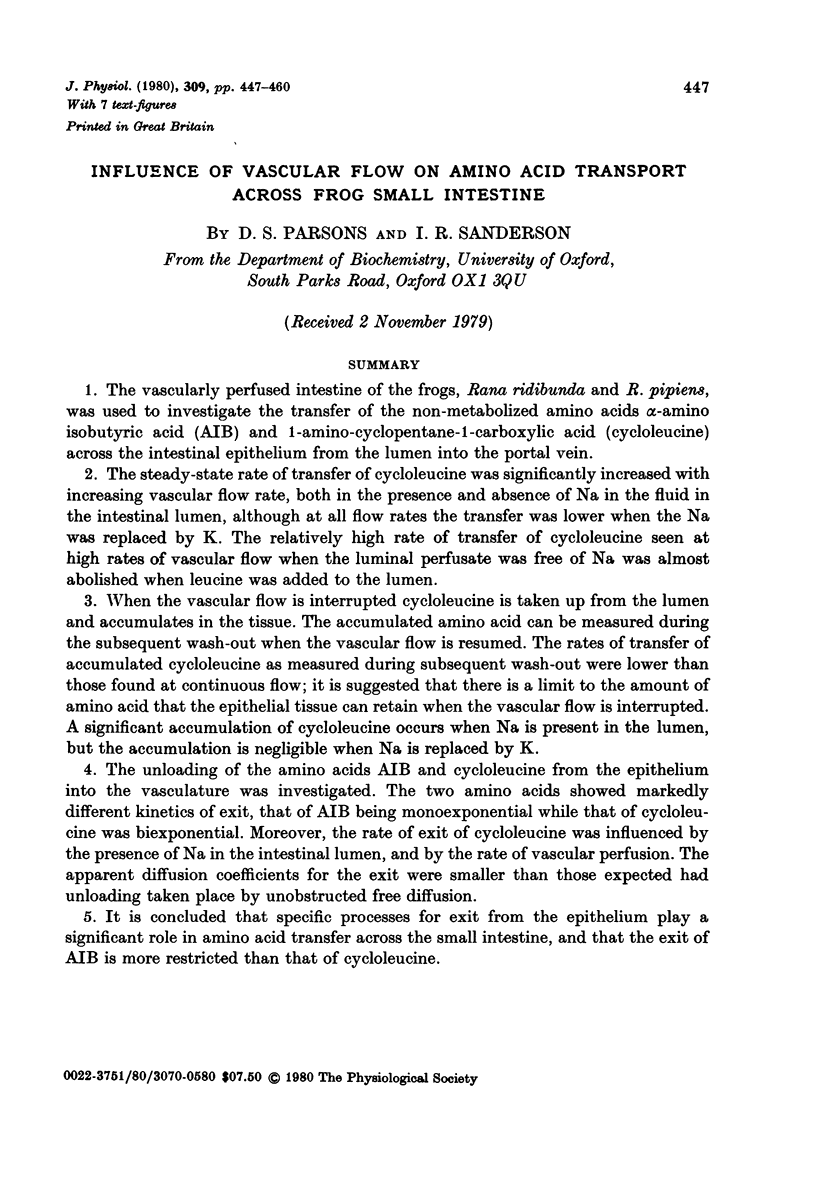
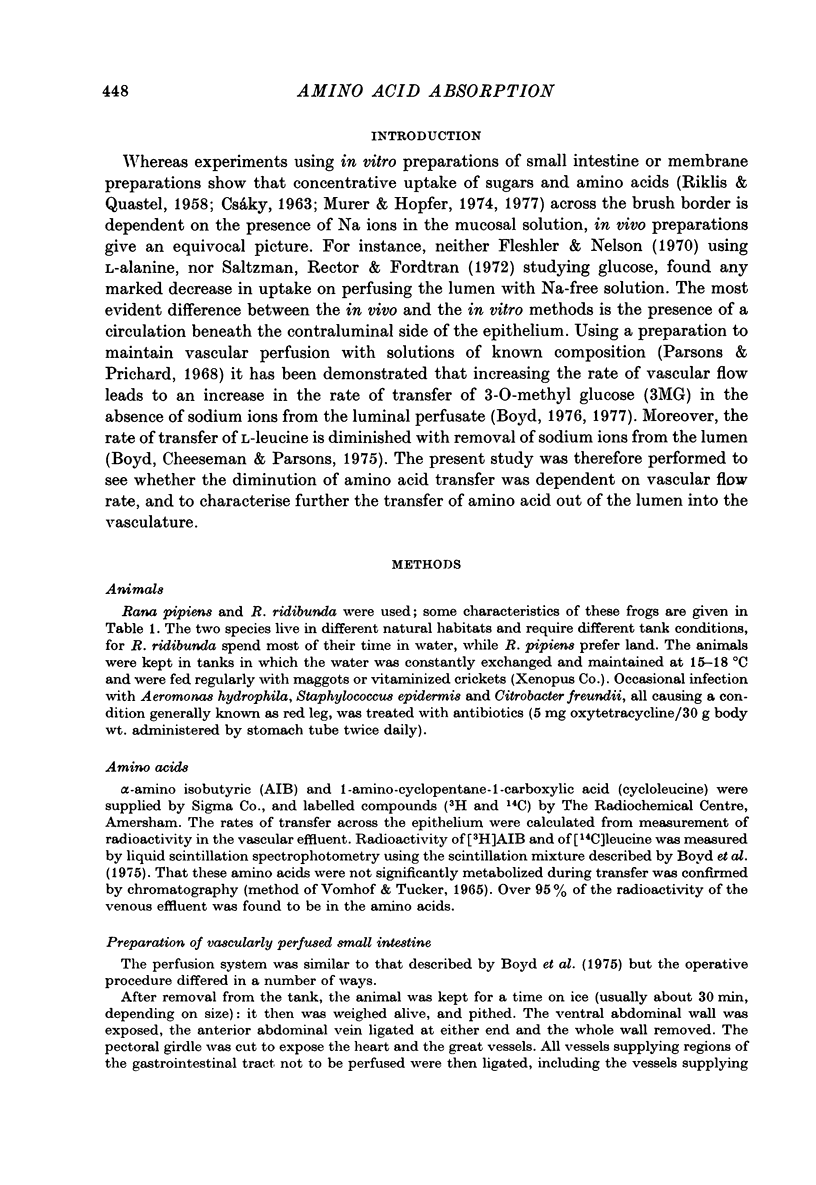
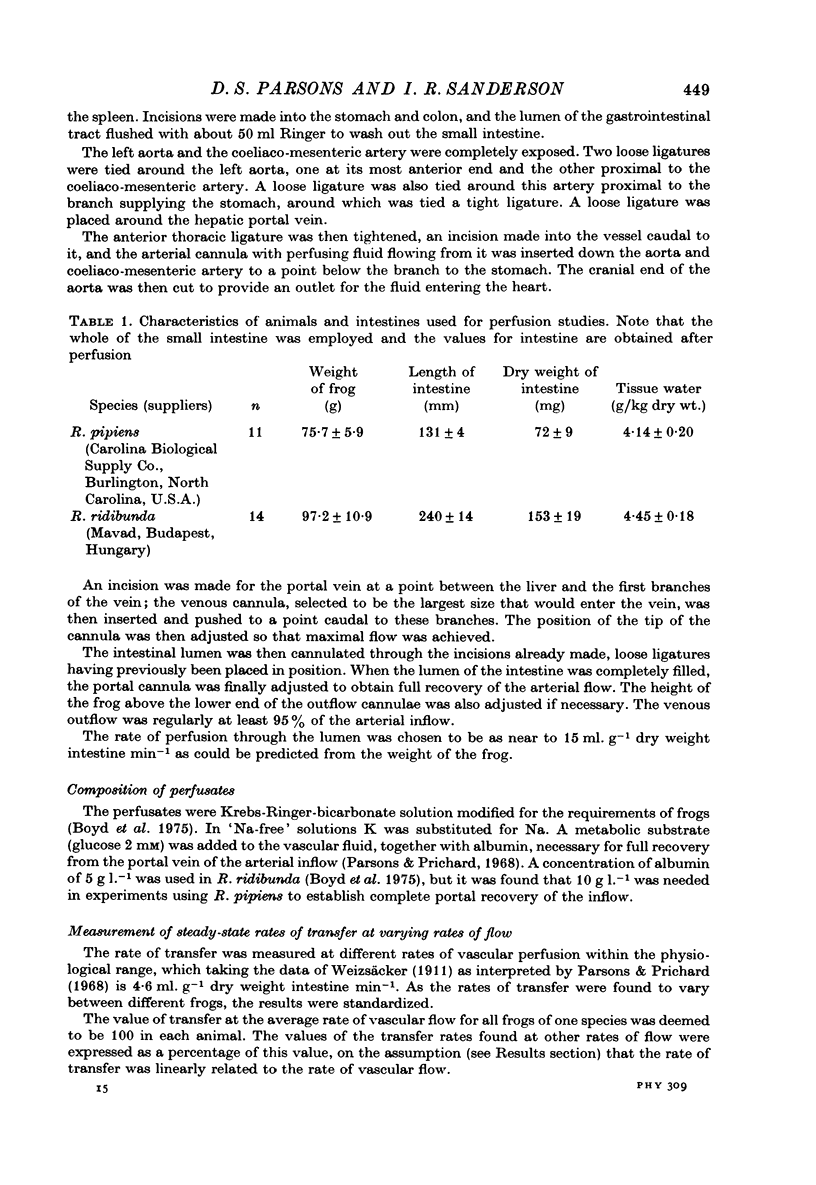
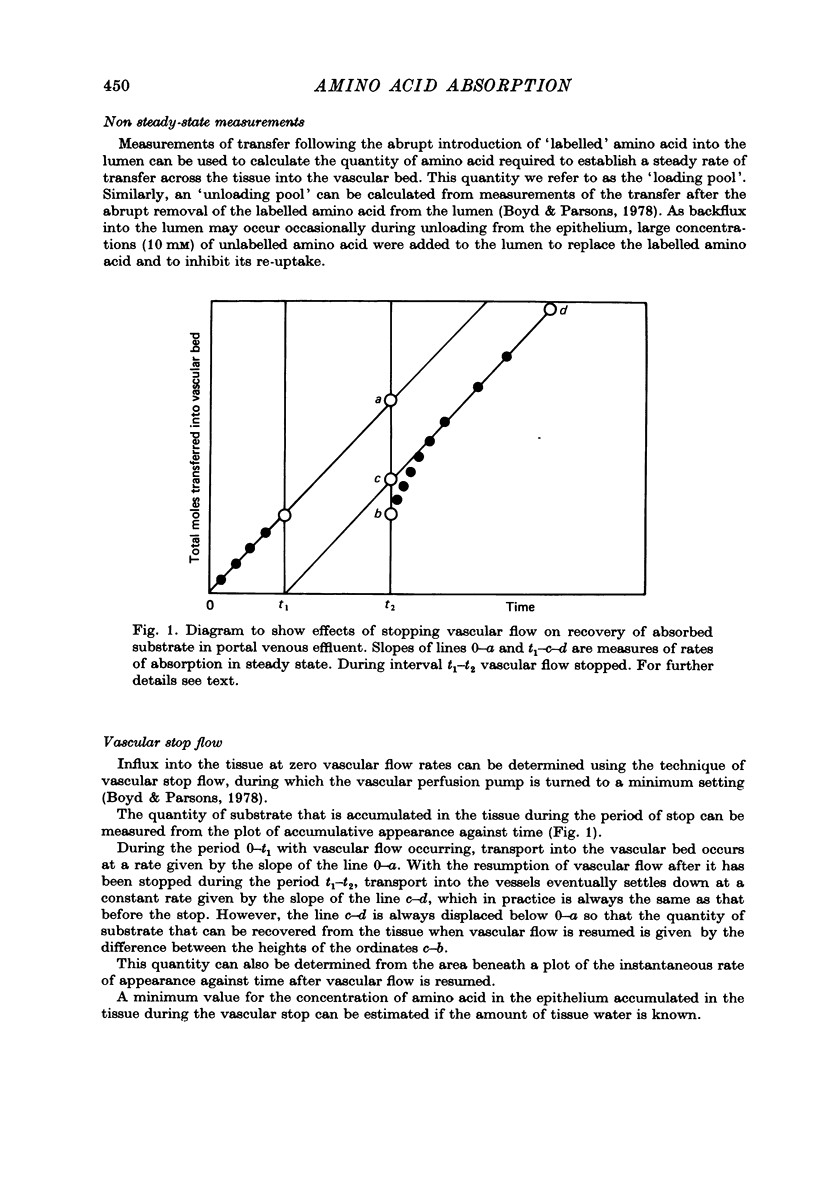

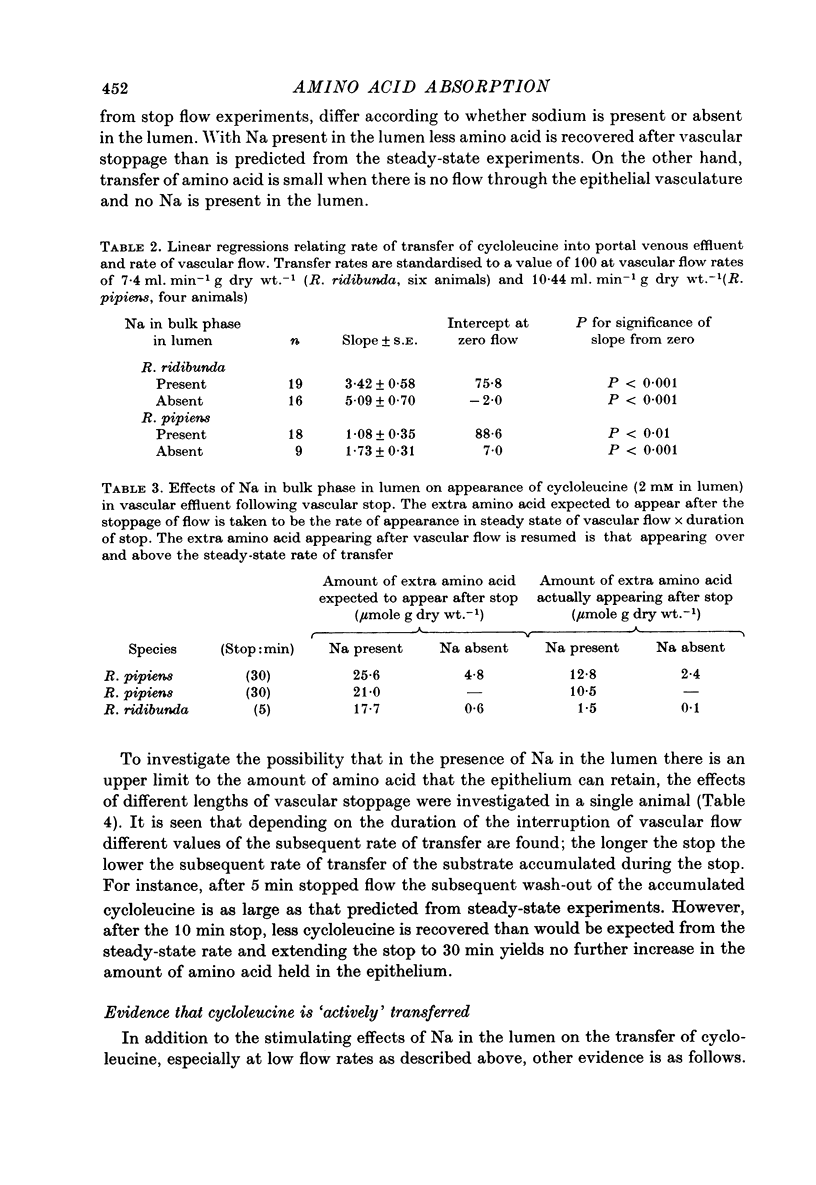


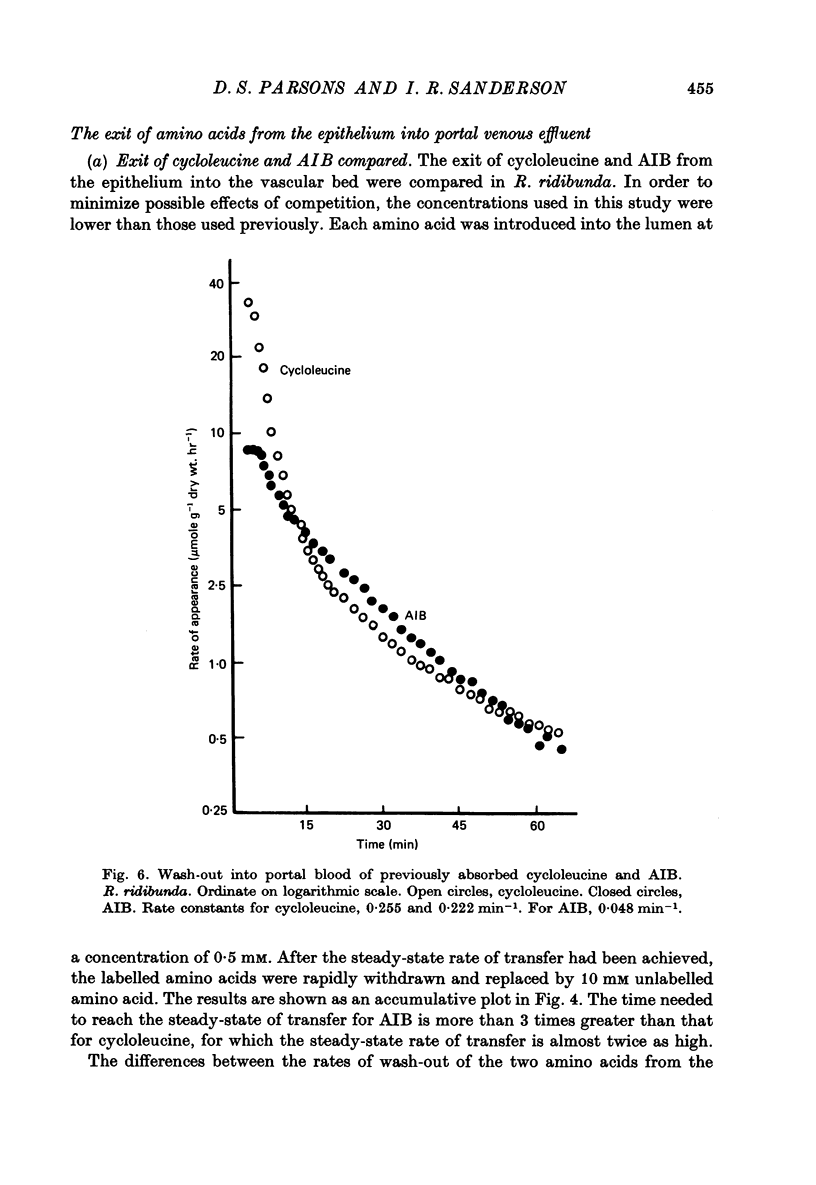
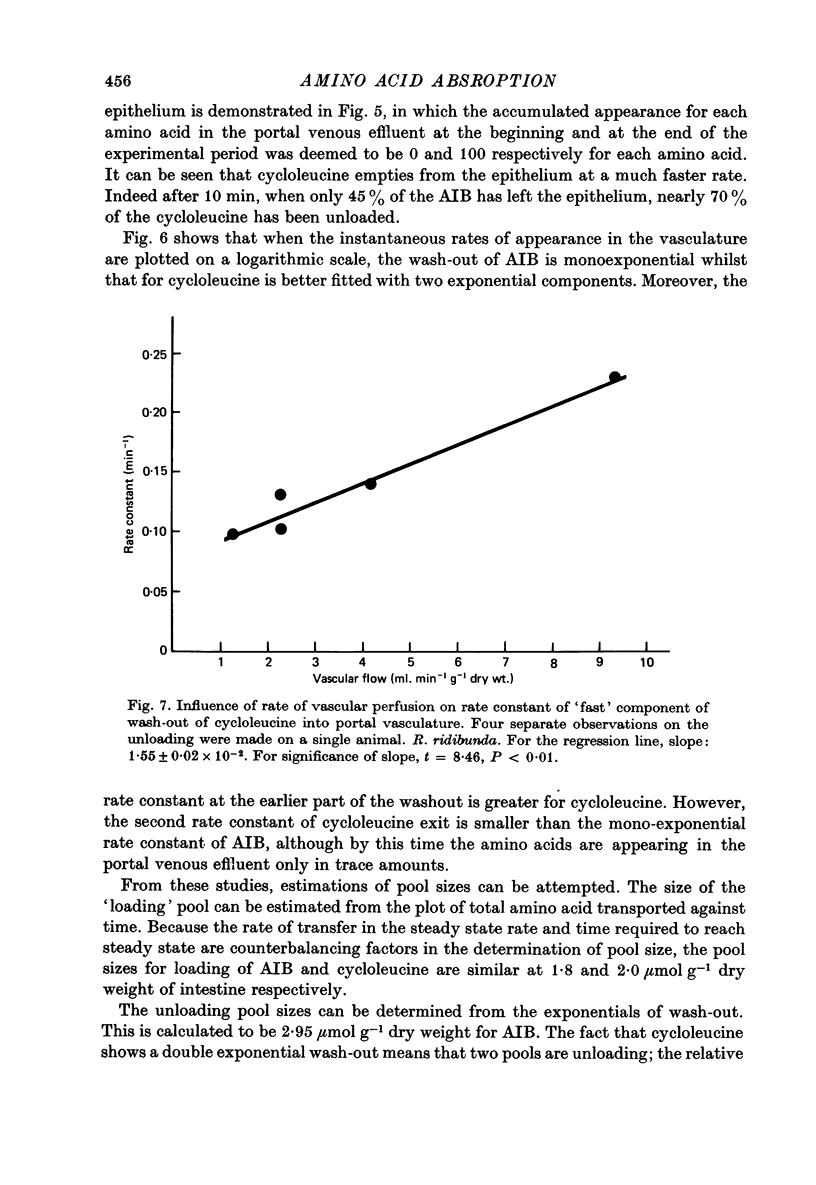
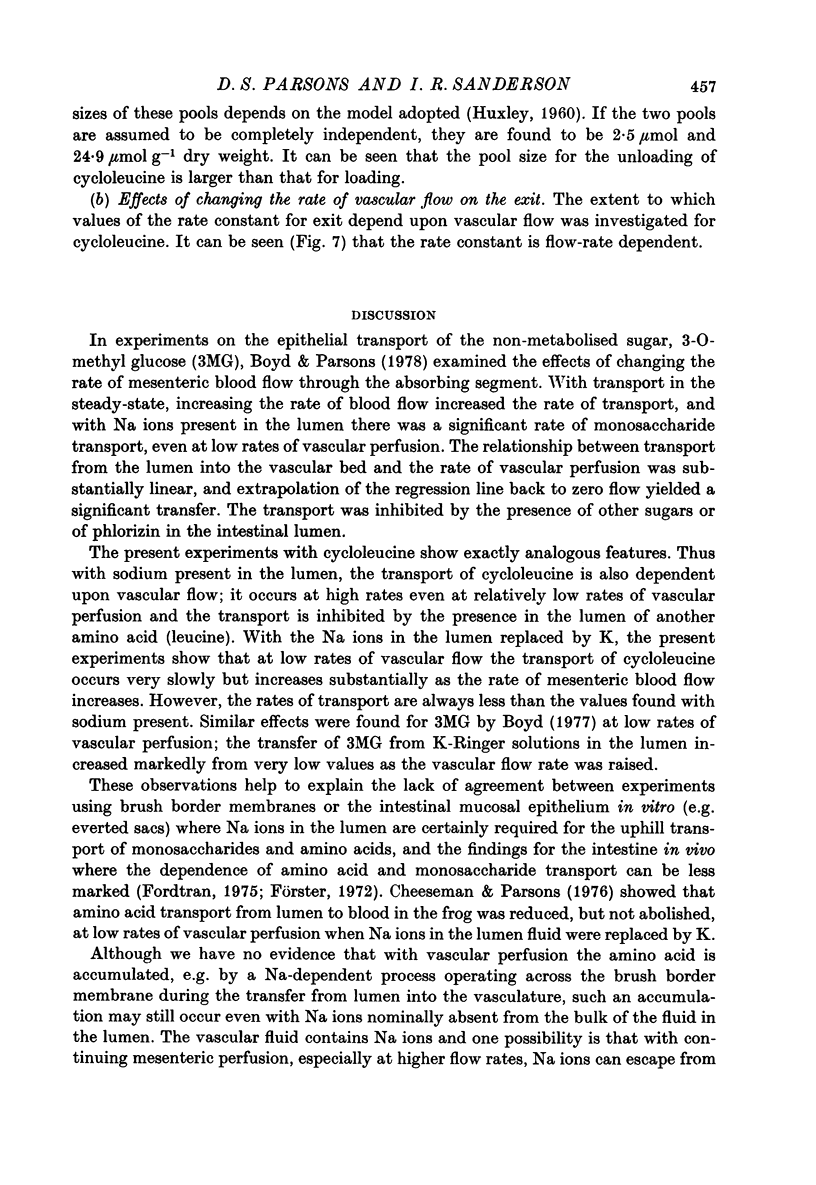

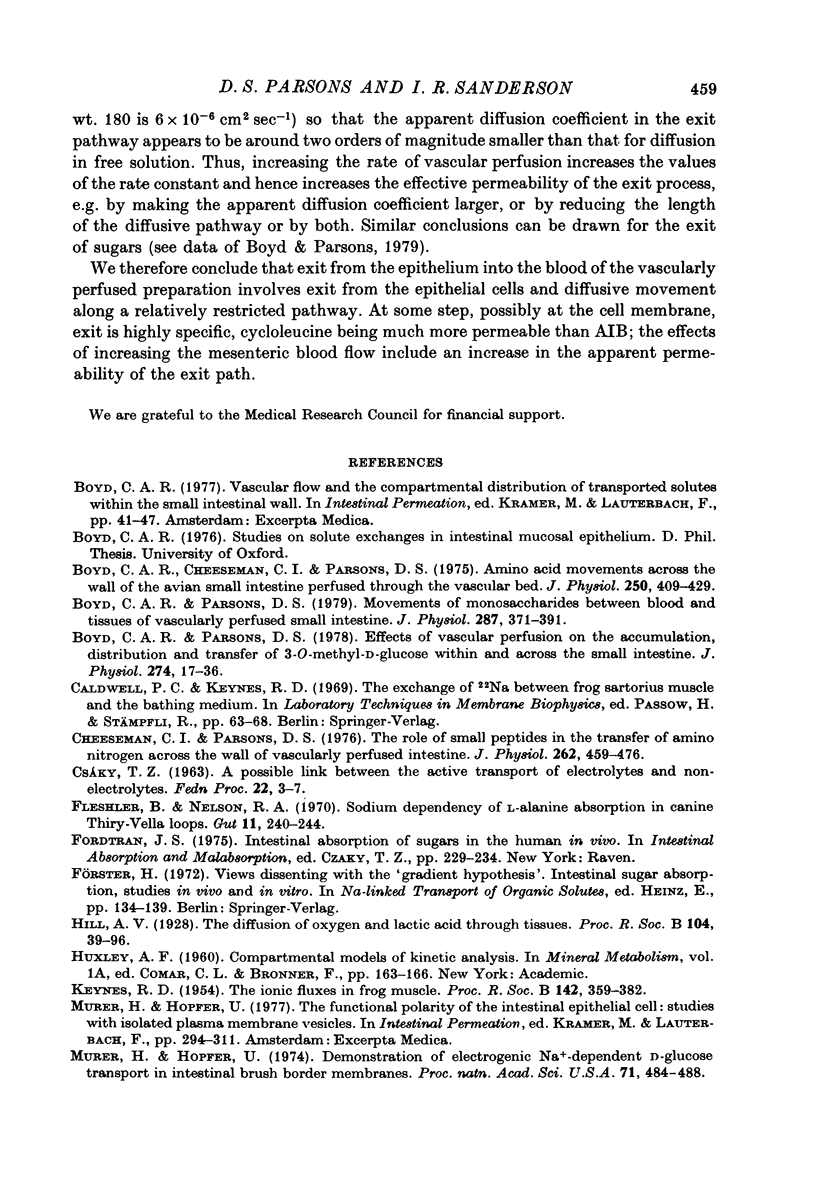

Selected References
These references are in PubMed. This may not be the complete list of references from this article.
- Boyd C. A., Cheeseman C. I., Parsons D. S. Amino acid movements across the wall of anuran small intestine perfused through the vascular bed. J Physiol. 1975 Sep;250(2):409–429. doi: 10.1113/jphysiol.1975.sp011062. [DOI] [PMC free article] [PubMed] [Google Scholar]
- Boyd C. A., Parsons D. S. Effects of vascular perfusion on the accumulation, distribution and transfer of 3-O-methyl-D-glucose within and across the small intestine. J Physiol. 1978 Jan;274:17–36. doi: 10.1113/jphysiol.1978.sp012131. [DOI] [PMC free article] [PubMed] [Google Scholar]
- Boyd C. A., Parsons D. S. Movements of monosaccharides between blood and tissues of vascularly perfused small intestine. J Physiol. 1979 Feb;287:371–391. doi: 10.1113/jphysiol.1979.sp012665. [DOI] [PMC free article] [PubMed] [Google Scholar]
- Cheeseman C. I., Parsons D. S. The role of some small peptides in the transfer of amino nitrogen across the wall of vascularly perfused intestine. J Physiol. 1976 Nov;262(2):459–476. doi: 10.1113/jphysiol.1976.sp011605. [DOI] [PMC free article] [PubMed] [Google Scholar]
- Fleshler B., Nelson R. A. Sodium dependency of L-alanine absorption in canine Thiry-Vella loops. Gut. 1970 Mar;11(3):240–244. doi: 10.1136/gut.11.3.240. [DOI] [PMC free article] [PubMed] [Google Scholar]
- Murer H., Hopfer U. Demonstration of electrogenic Na+-dependent D-glucose transport in intestinal brush border membranes. Proc Natl Acad Sci U S A. 1974 Feb;71(2):484–488. doi: 10.1073/pnas.71.2.484. [DOI] [PMC free article] [PubMed] [Google Scholar]
- Parsons D. S., Prichard J. S. A preparation of perfused small intestine for the study of absorption in amphibia. J Physiol. 1968 Sep;198(2):405–434. doi: 10.1113/jphysiol.1968.sp008614. [DOI] [PMC free article] [PubMed] [Google Scholar]
- RIKLIS E., QUASTEL J. H. Effects of cations on sugar absorption by isolated surviving guinea pig intestine. Can J Biochem Physiol. 1958 Mar;36(3):347–362. [PubMed] [Google Scholar]
- Saltzman D. A., Rector F. C., Jr, Fordtran J. S. The role of intraluminal sodium in glucose absorption in vivo. J Clin Invest. 1972 Apr;51(4):876–885. doi: 10.1172/JCI106882. [DOI] [PMC free article] [PubMed] [Google Scholar]
- VOMHOF D. W., TUCKER T. C. THE SEPARATION OF SIMPLE SUGARS BY CELLULOSE THIN-LAYER CHROMATOGRAPHY. J Chromatogr. 1965 Feb;17:300–306. doi: 10.1016/s0021-9673(00)99872-8. [DOI] [PubMed] [Google Scholar]


